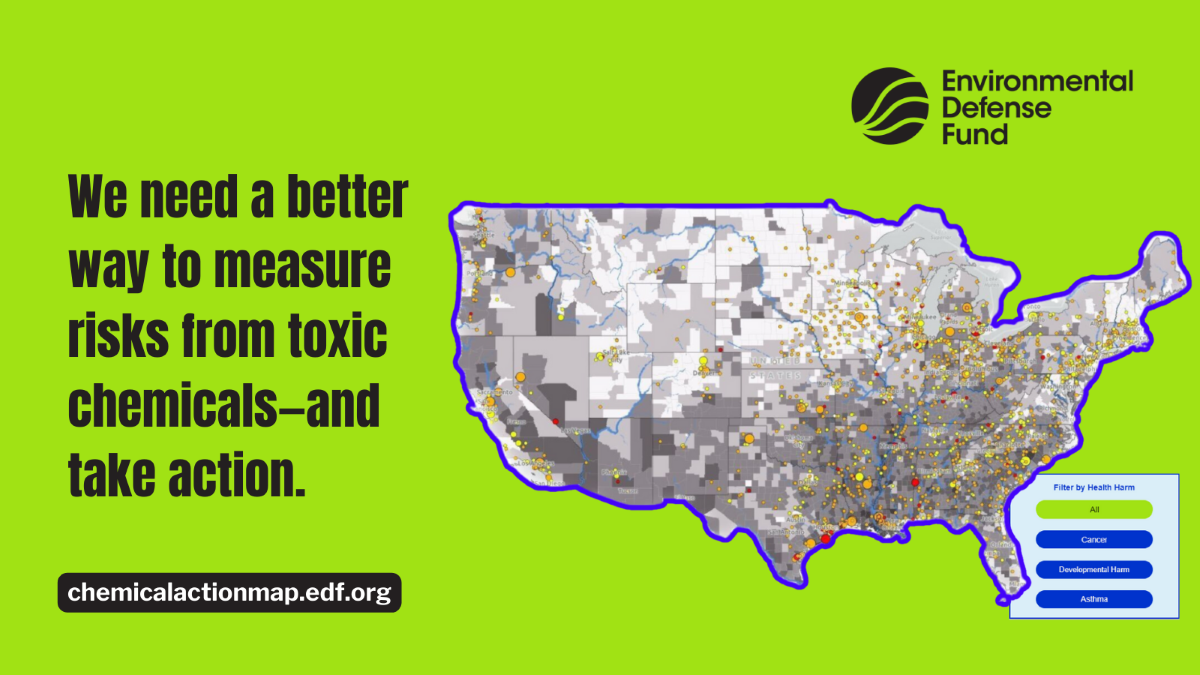Monitoring our chemical exposures: Five lessons learned and what’s on the horizon
Lindsay McCormick, is a Project Manager.
Last October, a groundbreaking report concluded that diseases caused by pollution were responsible for 1 in 6 premature deaths in 2015 worldwide. That’s 9 million deaths caused by environmental pollution – three times more than AIDS, tuberculosis, and malaria combined.
That may seem startling at first, but health outcomes are largely defined by a person’s genes and their environment. In fact, environmental factors – like ambient and household air pollution, industrial chemicals, and common consumer products – are implicated in health impacts ranging from cancer and asthma to infertility.
Unfortunately, our ability to track an individual’s chemical exposures – also called the “chemical exposome” – lags way behind what we can measure genetically. And without this information, it is virtually impossible to develop sound policies and evidence-based interventions to reduce harmful exposures and protect health.
But what if everyone could monitor hazardous chemical exposures? What if school children, soldiers, pregnant women, flight attendants, nail salon workers, gas attendants, and those living within just a few miles of industrial sites – or just about anyone – could understand chemical exposures in their personal environment?
This is where EDF comes in. EDF is exploring ways to catalyze development and scaling of breakthrough technologies capable of detecting an individual’s exposure to a broad spectrum of chemicals—making the invisible, visible.
Our efforts began three years ago, with a series of pilot projects in which people wore a simple silicone wristband capable of detecting over 1,400 chemicals in the environment. Today, we’re collaborating with diverse stakeholders to identify needs and opportunities for accelerating broad uptake of chemical exposure monitoring technologies. Below are five important lessons to jump-start this opportunity.
1. There’s huge demand for chemical exposure data.
Interest in understanding personal chemical exposures comes from a variety of sources, from military personnel and private sector companies to healthcare providers and consumers – each with their unique technology, performance, and cost preferences. To drive innovation, there is a need to translate this demand into increased investment in and uptake of novel technologies.
2. Funding is not well-designed for the innovation needed.
Traditional public research funding for environmental health studies often does not explicitly support the development of exposure monitoring tools. Moreover, when such funding is made available, it is generally targeted towards the development of tools that address a narrow research question focused on a small subset of chemicals – creating little incentive for the development of technologies designed to measure a wider spectrum of chemical substances.
Diverse funding sources – such as crowd-funding, pre-buying agreements, lending libraries, challenge programs, and venture capital – are needed to spur technology development and uptake.
3. It’s a long game – that will require incremental progress and taking risks.
A single technology that fulfills the demands of all users does not currently exist (and may never). Seeking incremental advancements is likely to be more successful than attempting to develop the perfect device from the get go. At the same time, intelligence programs like IARPA – which invests in high risk/high payoff research programs – teach us the importance of investors tolerating a high failure rate in technology development in order to achieve success.
To that end, identifying and funding a specific use-case of a near-market ready technology, and showing movement towards solving an important problem in 6-24 months, may be the best balance between feasibility and risk-taking.
4. Validation is critical and will support uptake.
Studies designed to validate – or prove the efficacy of – new exposure monitoring technologies are critical to build confidence in these tools among the research community. Unfortunately, the pace of such studies has been slow, largely due to lack of funding. This dynamic can present a catch-22 – as low uptake of technologies due to performance concerns can stymie further development and improvement of promising new technologies.
One way to accelerate the market is through “test beds” – or a standardized set of performance tests – to allow users to compare results across different technologies. A recent technology challenge organized by NIST, the NFL, GE and Under Armour to create a football helmet to mitigate concussions provides an example of such an approach. NIST led the development of the “test bed” to evaluate and compare prototype helmet submission.
5. Communicating chemical exposure results is crucial.
Effective exposure monitoring tools must be coupled with meaningful communication of exposure information so that it is accessible. Without this step, individuals may become overwhelmed by the information and fail to take meaningful action – such as personal behavior change or advocacy efforts – to reduce exposure to hazardous chemicals. EDF is exploring new opportunities to ensure that chemical information is meaningful and useful to individuals.
We believe that with the right incentives, public health researchers, technology developers, and investors can work together to catalyze innovation – in technologies, processes, and business models – to unlock breakthrough solutions and reach the vision of a world where we can readily track our exposure to hazardous chemicals.












